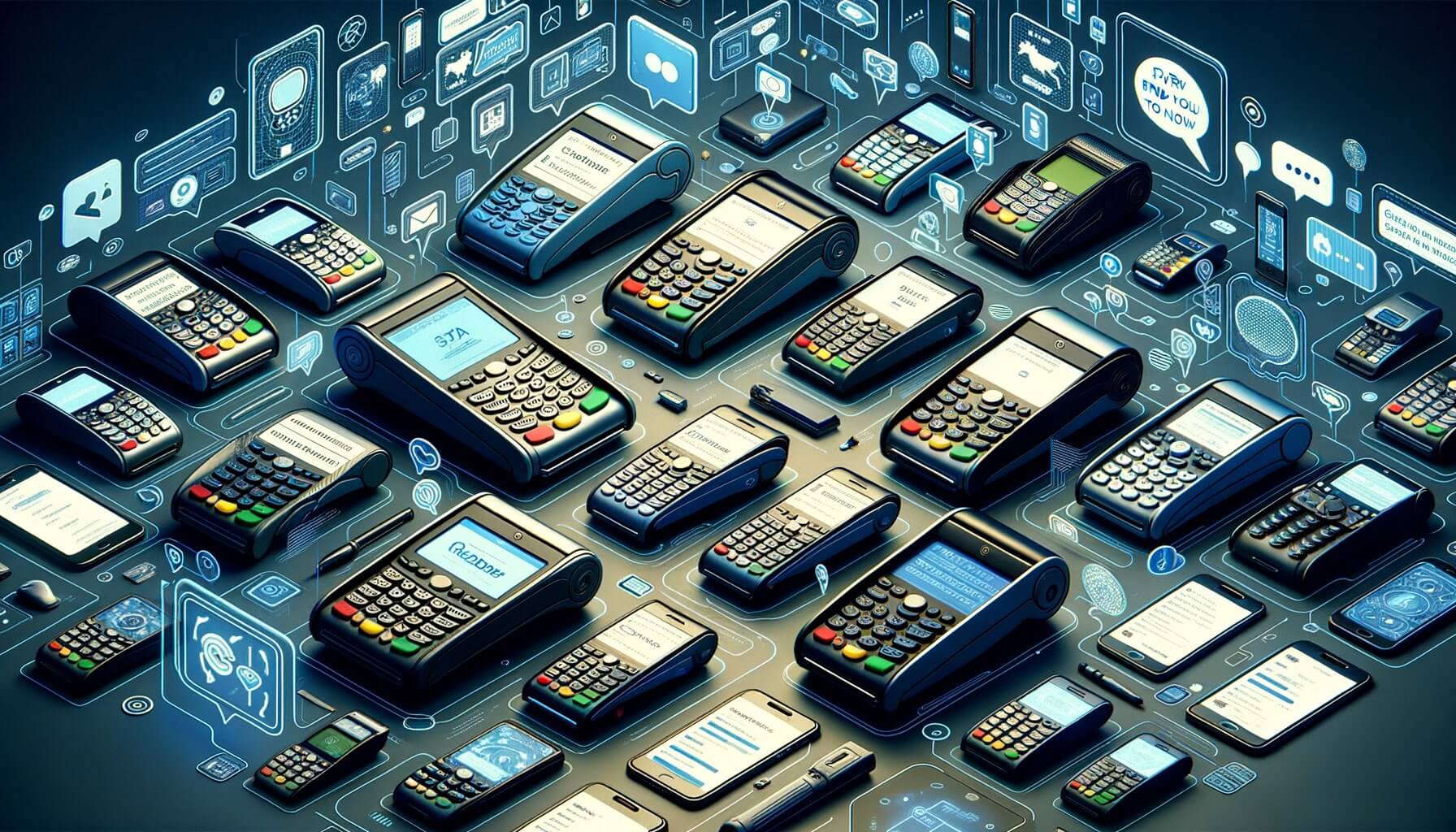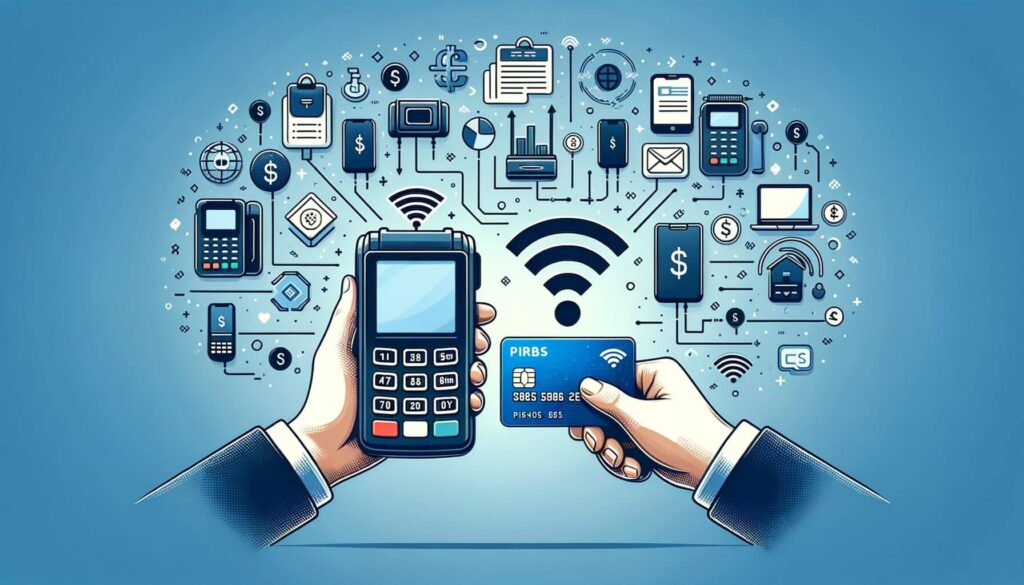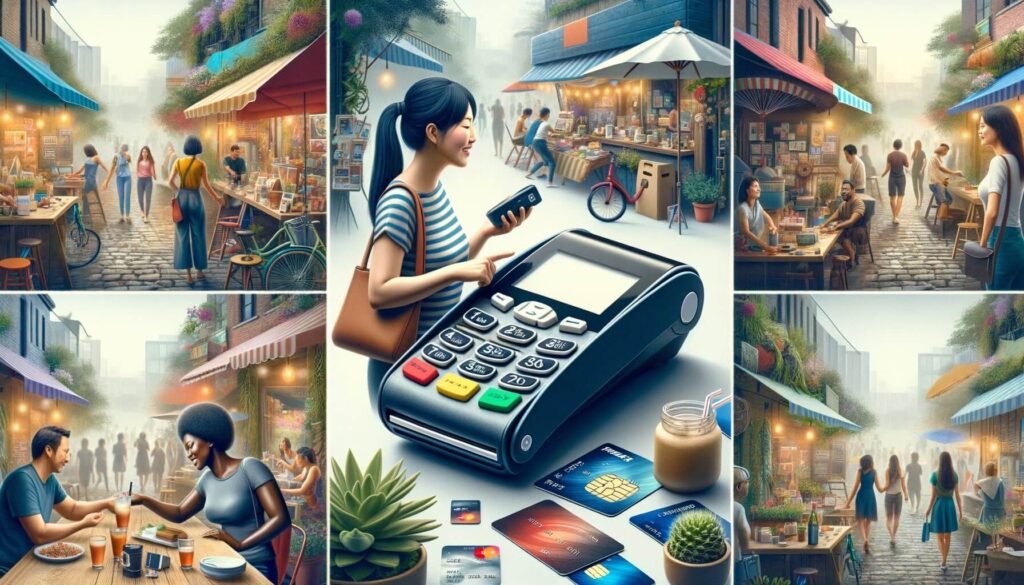
By Crystal Hopkins March 31, 2025
In today’s fast-paced world, convenience and efficiency are key factors in running a successful business. One aspect that plays a crucial role in achieving these goals is the ability to accept credit card payments. Portable credit card terminals have revolutionized the way businesses process transactions, providing a convenient and secure method for accepting payments on the go.
In this comprehensive guide, we will explore everything you need to know about portable credit card terminals, including how they work, their benefits, factors to consider when choosing one, setting up and activating the terminal, understanding different types, best practices for usage, troubleshooting common issues, and frequently asked questions.
How Portable Credit Card Terminals Work

Portable credit card terminals are compact devices that allow businesses to accept credit card payments wirelessly. These terminals utilize wireless technology, such as Bluetooth or Wi-Fi, to connect to a merchant account and securely transmit payment information.
When a customer makes a purchase, the terminal prompts them to insert or swipe their credit card. The terminal then encrypts the cardholder’s information and securely transmits it to the payment processor for authorization. Once the transaction is approved, a receipt is generated for the customer, and the funds are transferred to the merchant’s account.
Benefits of Using Portable Credit Card Terminals

There are numerous benefits to using portable credit card terminals for businesses of all sizes. Firstly, they offer convenience and flexibility, allowing businesses to accept payments anywhere, whether it’s at a trade show, a pop-up shop, or even at the customer’s location. This flexibility eliminates the need for a fixed point-of-sale system and enables businesses to provide a seamless payment experience to their customers.
Secondly, portable credit card terminals enhance security. These devices are equipped with advanced encryption technology, ensuring that sensitive customer data is protected during the payment process. By using these terminals, businesses can reduce the risk of data breaches and potential liability associated with storing customer payment information.
Furthermore, portable credit card terminals improve cash flow. With the ability to accept credit card payments on the spot, businesses can avoid the hassle of invoicing and waiting for checks to clear. This results in faster access to funds, allowing businesses to allocate resources more efficiently and invest in growth opportunities.
Factors to Consider When Choosing a Portable Credit Card Terminal

When selecting a portable credit card terminal, there are several factors to consider to ensure that you choose the right device for your business needs. Firstly, compatibility is crucial. Make sure that the terminal you choose is compatible with your existing point-of-sale system or payment processor. This will ensure a seamless integration and prevent any compatibility issues that may arise.
Secondly, consider the connectivity options available. Most portable credit card terminals offer Bluetooth and Wi-Fi connectivity, but it’s important to check the range and reliability of these connections. A stable and secure connection is essential for smooth transaction processing.
Another factor to consider is the terminal’s battery life. Since portable credit card terminals are designed for on-the-go usage, it’s important to choose a device with a long-lasting battery. This will prevent interruptions during transactions and ensure that you can accept payments throughout the day without worrying about running out of power.
Additionally, consider the terminal’s durability and ease of use. Look for a device that is built to withstand the rigors of daily use and is user-friendly for both you and your customers. A terminal with a clear and intuitive interface will minimize errors and provide a positive payment experience for your customers.
Setting Up and Activating Your Portable Credit Card Terminal
Setting up and activating your portable credit card terminal is a straightforward process that can be completed in a few simple steps. Firstly, ensure that you have a merchant account with a payment processor that supports portable credit card terminals. Contact your payment processor to confirm compatibility and obtain any necessary credentials or software.
Next, charge your terminal’s battery fully before use. This will ensure that you have sufficient power to process transactions throughout the day. Once charged, power on the terminal and follow the on-screen prompts to connect it to your Wi-Fi or Bluetooth network. Enter the necessary network credentials, and the terminal will establish a secure connection.
After connecting to the network, you will need to activate the terminal with your merchant account. This typically involves entering your merchant ID and other relevant information provided by your payment processor. Once activated, your terminal is ready to accept payments. Test a transaction to ensure that everything is functioning correctly, and you’re all set to start processing payments on the go.
Understanding Different Types of Portable Credit Card Terminals
There are several types of portable credit card terminals available in the market, each with its own features and capabilities. Understanding the different types will help you choose the one that best suits your business needs.
1. Mobile Credit Card Readers: These are small card readers that can be attached to a smartphone or tablet. They utilize the device’s internet connection and processing power to accept payments. Mobile credit card readers are ideal for small businesses or individuals who require a cost-effective and portable solution.
2. Wireless Terminals: These terminals connect to a cellular network or Wi-Fi and do not require a smartphone or tablet for processing. They offer more advanced features compared to mobile credit card readers and are suitable for businesses that require a standalone solution with enhanced functionality.
3. All-in-One Systems: These systems combine a portable credit card terminal with a cash register or point-of-sale system. They offer a comprehensive solution for businesses that require both payment processing and inventory management capabilities. All-in-one systems are typically larger and more robust, making them suitable for medium to large businesses.
Best Practices for Using Portable Credit Card Terminals
To ensure a smooth and efficient payment process, it’s important to follow best practices when using portable credit card terminals. Firstly, always keep your terminal charged and carry a backup battery or charger with you. This will prevent any interruptions during transactions and ensure that you can accept payments throughout the day.
Secondly, establish a stable and secure internet connection. If using Wi-Fi, ensure that you are connected to a reliable network with a strong signal. If using a cellular network, check for coverage in the area where you will be processing transactions. A stable connection is essential for seamless transaction processing and to avoid any delays or errors.
Furthermore, train your staff on how to use the portable credit card terminal effectively. Familiarize them with the interface, transaction process, and troubleshooting steps. This will minimize errors and ensure that your staff can assist customers confidently during the payment process.
Additionally, regularly update your terminal’s software and security patches. Manufacturers often release updates to address any vulnerabilities or improve functionality. By keeping your terminal up to date, you can ensure that you are benefiting from the latest features and security enhancements.
Troubleshooting Common Issues with Portable Credit Card Terminals
While portable credit card terminals are designed to be reliable and user-friendly, occasional issues may arise. Here are some common problems you may encounter and their possible solutions:
1. Connection Issues: If your terminal is having trouble connecting to the internet, check your network settings and ensure that you have a stable connection. Restart the terminal and try reconnecting. If the issue persists, contact your payment processor for further assistance.
2. Battery Drain: If your terminal’s battery is draining quickly, check for any power-hungry applications running in the background. Close unnecessary apps and reduce the screen brightness to conserve battery life. If the issue persists, consider replacing the battery or contacting the manufacturer for support.
3. Card Reading Errors: If the terminal is having trouble reading credit cards, ensure that the card is inserted or swiped correctly. Clean the card reader with a soft cloth to remove any dirt or debris that may be obstructing the reading process. If the issue continues, contact your payment processor for further guidance.
4. Transaction Declines: If a transaction is declined, ensure that the customer’s card is valid and has sufficient funds. If the issue persists, contact your payment processor to investigate the cause of the decline.
Frequently Asked Questions about Portable Credit Card Terminals
Q1. Are portable credit card terminals secure?
Answer: Yes, portable credit card terminals are designed with advanced encryption technology to ensure the security of customer data during the payment process. By using these terminals, businesses can reduce the risk of data breaches and potential liability associated with storing customer payment information.
Q2. Can I use a portable credit card terminal without an internet connection?
Answer: Some portable credit card terminals offer offline mode, allowing you to accept payments even without an internet connection. However, offline transactions may have limitations, such as a higher risk of fraud or delayed transaction processing. It’s recommended to have a stable internet connection for seamless and secure transaction processing.
Q3. Can I accept contactless payments with a portable credit card terminal?
Answer: Yes, many portable credit card terminals support contactless payment methods, such as NFC (Near Field Communication) or mobile wallets like Apple Pay or Google Pay. These payment methods offer convenience and speed for both businesses and customers.
Q4. How long does it take to receive funds from credit card transactions?
Answer: The time it takes to receive funds from credit card transactions can vary depending on your payment processor and bank. Typically, funds are deposited into your merchant account within 1-3 business days. However, some payment processors offer faster funding options for an additional fee.
Conclusion
Portable credit card terminals have revolutionized the way businesses accept payments, providing convenience, security, and flexibility.
By understanding how these terminals work, their benefits, factors to consider when choosing one, setting up and activating the terminal, understanding different types, best practices for usage, troubleshooting common issues, and frequently asked questions, businesses can make informed decisions and optimize their payment processing capabilities.
With the right portable credit card terminal, businesses can enhance customer experience, improve cash flow, and streamline their operations, ultimately leading to increased success and growth.